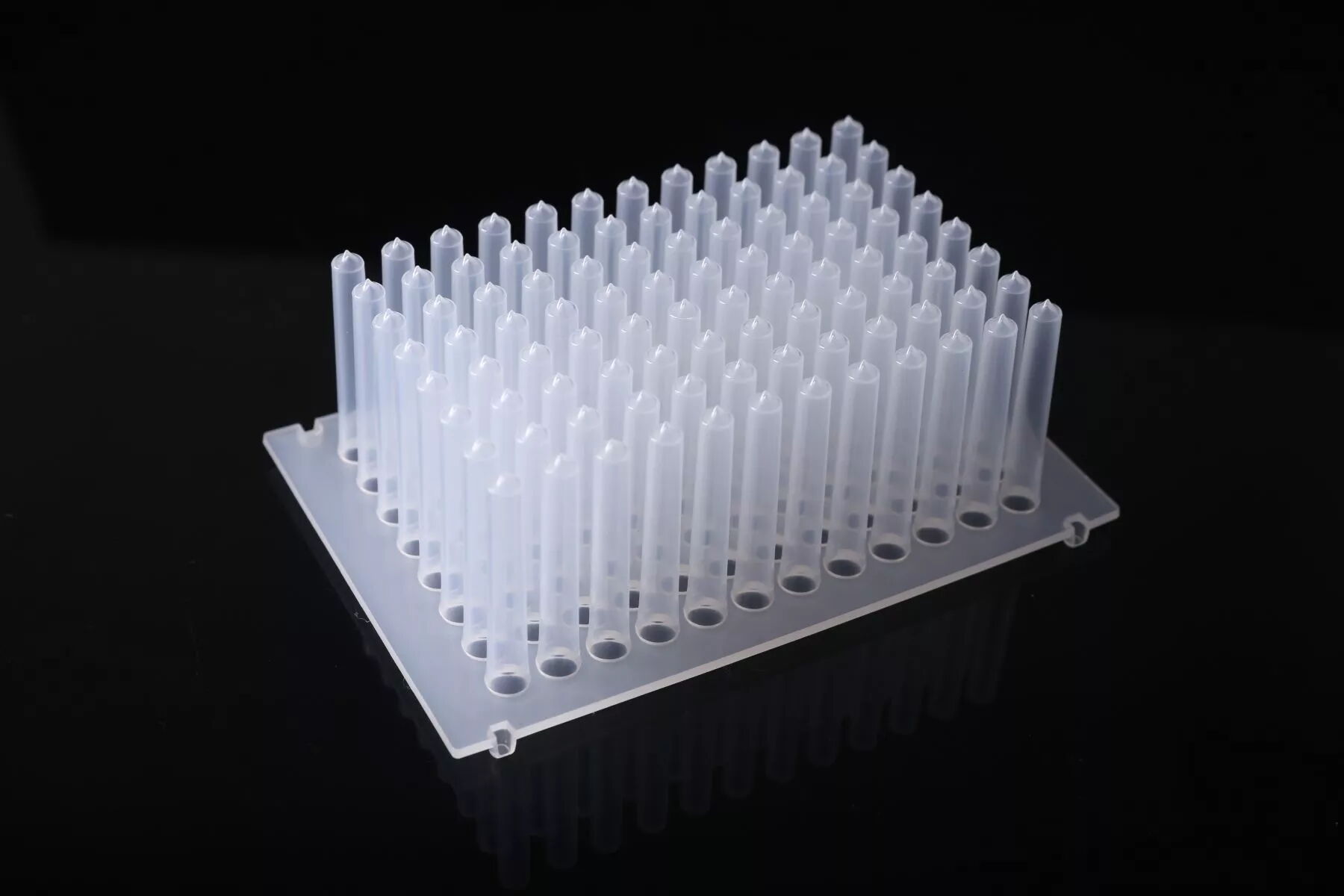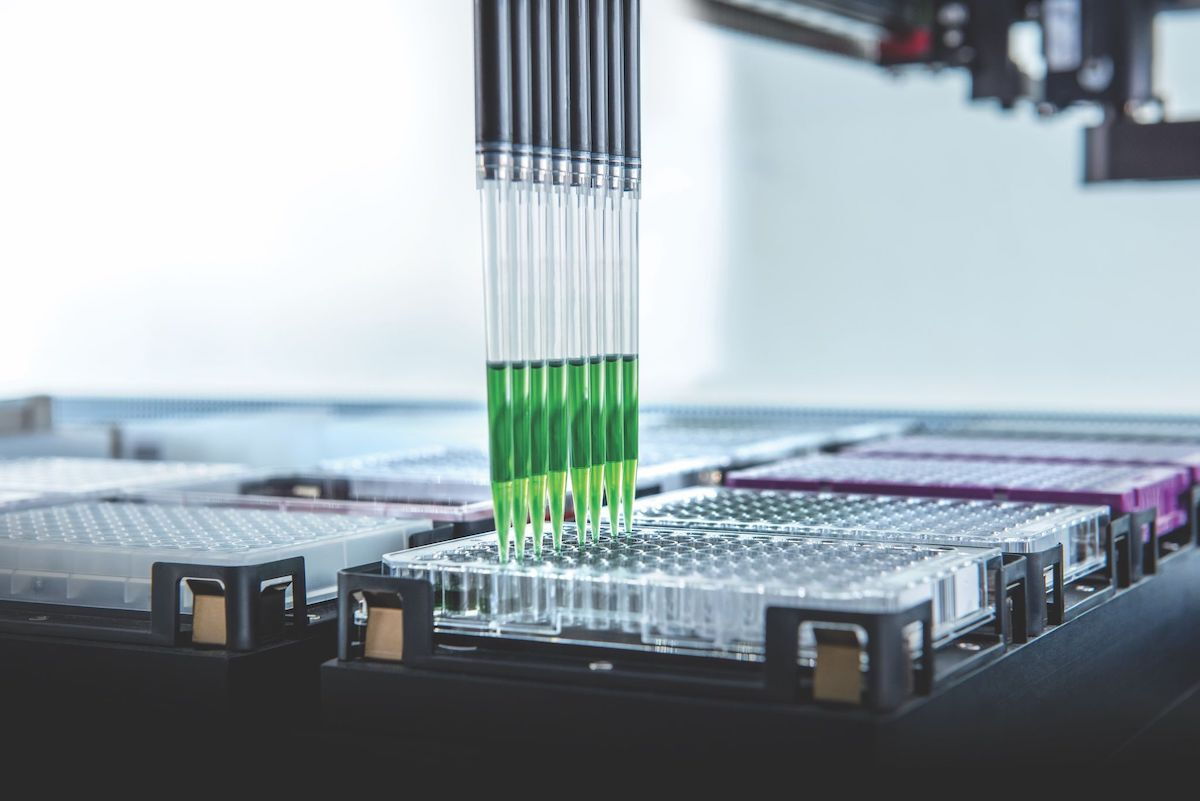Advantages of 96-Well Full Skirted PCR Plates
May 10, 2024
In the realm of laboratory automation, discovering tools that maximize precision and efficacy is paramount. The introduction of the 96-well fully skirted PCR plate has revolutionized automation capabilities for researchers and scientists. These plates boast an array of functionalities that elevate analytical accuracy, safeguard sample integrity, and seamlessly integrate with robotic platforms. In this article, we will explore the intricacies of the 96-well fully skirted PCR plate and examine its benefits across diverse laboratory settings.
Enhancing Efficiency:
A standout feature of 96-well fully skirted plates is their capacity to boost efficiency. Engineered to align with a standard ANSI footprint and stackable for automated systems, these plates optimize precious laboratory real estate. This design empowers researchers to conduct a larger volume of assays concurrently, markedly enhancing throughput, productivity, and cost-efficiency.
To seamlessly integrate with automated systems, the 96-well full skirt plate is available as a superplate, boasting four times greater rigidity. This essential attribute guarantees exceptional robotic handling, effectively reducing the likelihood of accidents and errors during plate transfer. Automated equipment adeptly maneuvers, organizes, and relocates plates, streamlining operations and curtailing downtime to enhance overall efficiency.
Dependable Evaporation Prevention:
The raised edges surrounding each well of the plate ensure a tight seal, effectively preventing evaporation. This seal is indispensable when working with delicate samples that demand precise volume and environmental control. Researchers can have peace of mind knowing that their valuable samples are shielded from contamination and evaporation, guaranteeing consistent and trustworthy experimental outcomes.
Uniform Heat Distribution:
The 96-well full skirt plate achieves consistent heat transfer through its uniformly thin well walls, ensuring optimal temperature control across all wells. This consistency is essential for assays demanding precise temperature regulation, including thermal cycling, enzymatic reactions, and protein crystallization. Leveraging the plate's efficient heat transfer properties facilitates dependable and reproducible outcomes, minimizing experimental variations and enhancing the quality of collected data.
Enhancing Efficiency:
A standout feature of 96-well fully skirted plates is their capacity to boost efficiency. Engineered to align with a standard ANSI footprint and stackable for automated systems, these plates optimize precious laboratory real estate. This design empowers researchers to conduct a larger volume of assays concurrently, markedly enhancing throughput, productivity, and cost-efficiency.
Enhancing PCR Efficiency:
The streamlined design of the 96-well fully skirted plate plays a pivotal role in enhancing the efficiency of the polymerase chain reaction (PCR). PCR, a fundamental technique for DNA amplification, is sensitive to temperature variations within the plate, which can lead to inconsistent amplification. By minimizing dead space, these plates promote uniform heat transfer, mitigating temperature discrepancies, and thereby elevating the reliability and precision of PCR outcomes.
To seamlessly integrate with automated systems, the 96-well full skirt plate is available as a superplate, boasting four times greater rigidity. This essential attribute guarantees exceptional robotic handling, effectively reducing the likelihood of accidents and errors during plate transfer. Automated equipment adeptly maneuvers, organizes, and relocates plates, streamlining operations and curtailing downtime to enhance overall efficiency.
Dependable Evaporation Prevention:
The raised edges surrounding each well of the plate ensure a tight seal, effectively preventing evaporation. This seal is indispensable when working with delicate samples that demand precise volume and environmental control. Researchers can have peace of mind knowing that their valuable samples are shielded from contamination and evaporation, guaranteeing consistent and trustworthy experimental outcomes.
Uniform Heat Distribution:
The 96-well full skirt plate achieves consistent heat transfer through its uniformly thin well walls, ensuring optimal temperature control across all wells. This consistency is essential for assays demanding precise temperature regulation, including thermal cycling, enzymatic reactions, and protein crystallization. Leveraging the plate's efficient heat transfer properties facilitates dependable and reproducible outcomes, minimizing experimental variations and enhancing the quality of collected data.
Previous: Exploring Various PCR Techniques
Next: Key Considerations for Accurate Automated Pipetting



